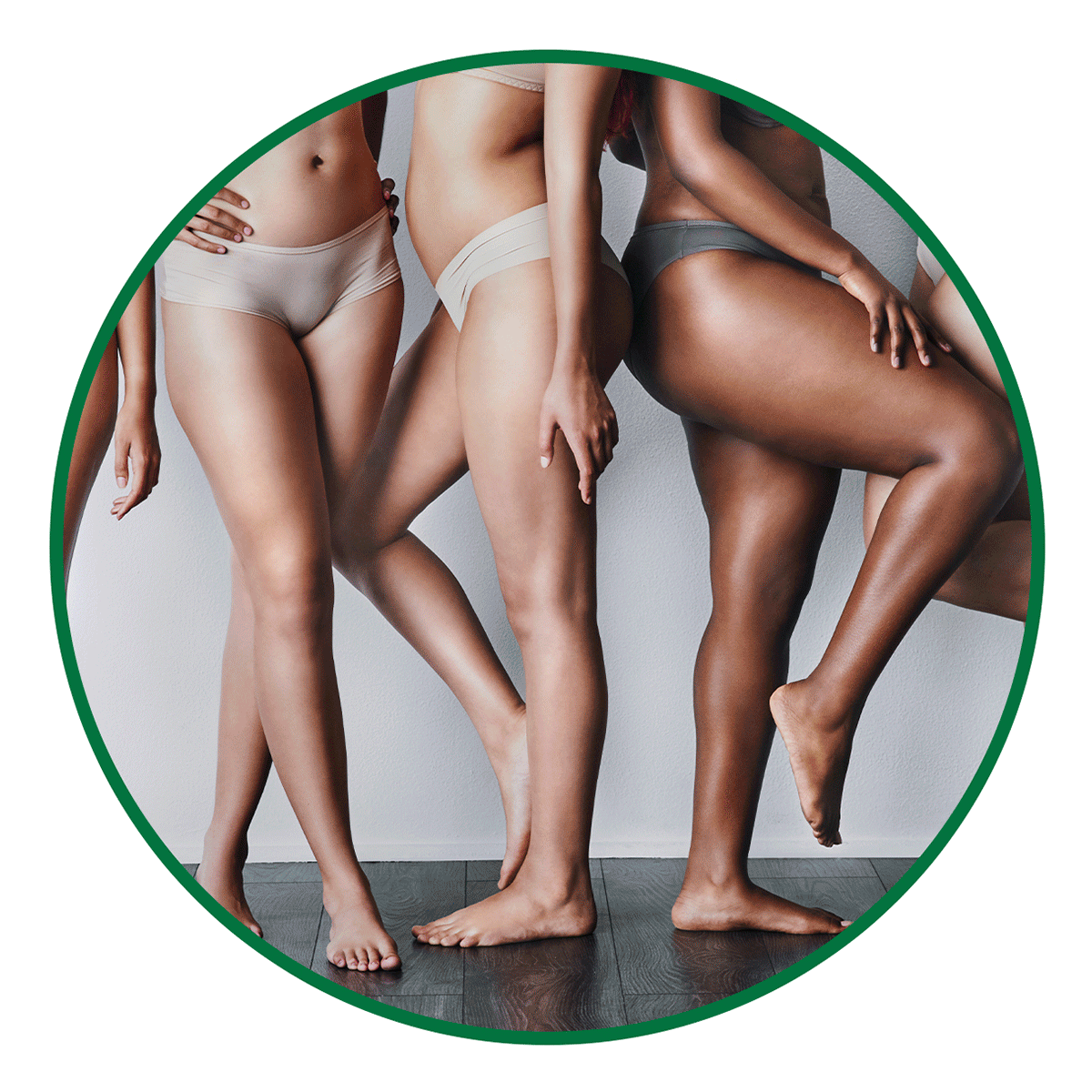
Here’s why women wear underwear (for the truly inquisitive)
That moment when you realize it’s officially time to stock up on new underwear—so do you go for sexy? Or pure, blissful, unapologetic comfort?
How about “healthy” as the lovely happy medium? It turns out, there is in fact a category of underwear that some women’s health professionals say is most optimal for the wellness of your most intimate parts.
To start, says Kim Langdon, MD, a retired, board-certified OB-GYN in Grove City, OH, there’s a reason women wear undergarments: they can help protect your clothing from vaginal discharge (which is often perfectly normal and healthy!), as well as during your time of the month (obvs). But it’s also about more than just protecting your clothes. The vulva itself can be sensitive to chafing and other skin irritation, so it could use some protection.
Therefore, underwear are designed to work as a buffer between the skin and clothing (especially tight clothing) that would otherwise create some friction that would probably be a little nuisance.
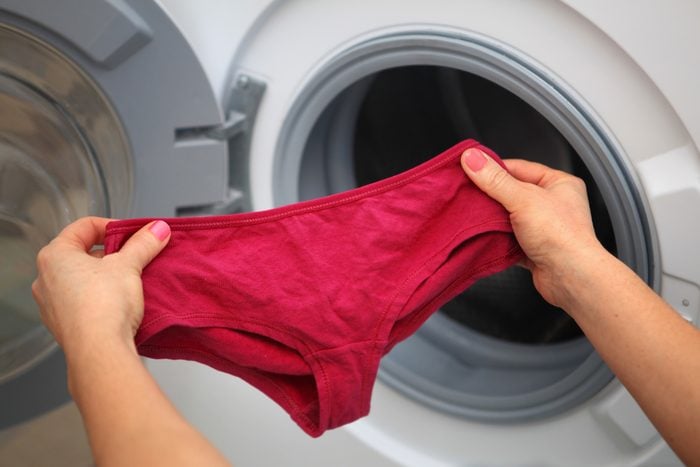
What should women’s underwear be made of?
Underwear might seem pretty basic—but not all underwear is created equally. In fact, there are types of underwear that can actually contribute to the kind of vaginal irritation you purchase a new set to avoid.
Some experts have recommended caution with underwear made of synthetic materials like nylon, spandex, and polyester (especially on the crotch lining). One 2003 study published in the European Journal of Obstetrics & Gynecology and Reproductive Biology suggested that underwear made from synthetic fabrics was associated with a higher risk of yeast infections.
However, which materials in particular might irritate your body is “not a one-size-fits-all proposition,” notes Suzanne Gilberg-Lenz, MD, an OB-GYN affiliated with Cedars-Sinai Medical Center in Los Angeles, CA and an advocate for integrative women’s health.
Cotton and other natural fibers are good
Natural fibers, like cotton, are one of the best underwear fabrics to add to your cart because they’re gentle to the skin, breathable, and comfortable (also one reason we’re fans of Viv all-natural bamboo feminine hygiene products). Cynthia Wesley, MD, an OB-GYN affiliated with Atrium Health University City and Carolinas ContinueCARE Hospital at University in Charlotte, NC, recommends that the fabric that touches the vulva should be made of cotton, which is absorbent while allowing for ventilation. (Always a win in summer!)
Others, like Dr. Langdon, say any breathable material that feels comfortable against your skin is a solid choice.
Some synthetic fabrics are probably fine, too…but there are points to consider
Says Jen Gunter, MD, an OB-GYN and pain management physician as well as author of The Vagina Bible, explains: “More recent studies that I believe to be of higher quality have shown no connection between underwear and yeast infections. Underwear can’t change vaginal pH; that is an inside job,” she says.
A more important factor Dr. Wesley notes is diet. Her advice for avoiding yeast infections is to monitor the sugar in your diet (and avoid consuming excessive quantities). Your hygiene choices play a more important role in your propensity to develop yeast infections, says Dr. Gilbert-Lenz. Douches, soaps, and harmful chemicals that strip the natural oils and shift your bacterial balance are a bigger issue than underwear fabric, she says.
In addition, Dr. Langdon suggests that changing your underwear daily may help to maintain vaginal health, especially at times of the month you’re prone to heavier discharge (like seven to 10 days after the last day of your period, when you may be ovulating).
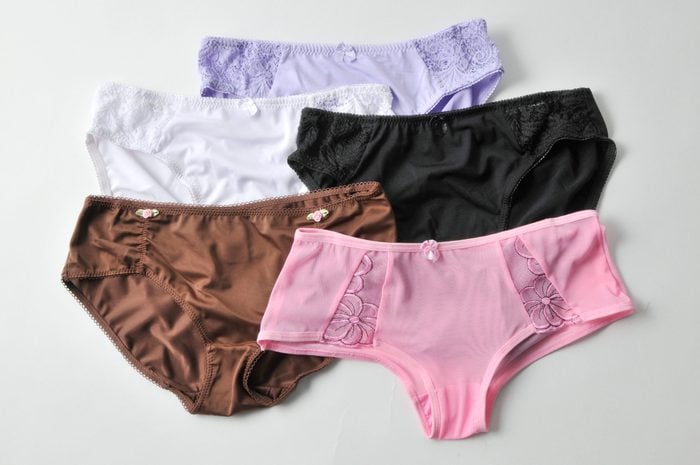
What’s the right cut for women’s underwear?
When it comes to styles, you can choose briefs, bikini, “cheeky” cut, boy shorts, a thong, or any number of other varieties. Which is the healthiest? The pros say the choice is personal, but often hinges on these factors:
Bacteria
According to Dr. Wesley, it doesn’t really matter whether the material covers your butt. “Cheeks-in versus cheeks-out is a non-factor in terms of vaginal health,” says Dr. Wesley. However, the healthiest option is for the fabric to cover the labia—those tender folds of skin around the vaginal opening.
Worth noting, adds Dr. Langdon, is that the primary reason not to wear a thong or G-string panty is that when the fabric is between the cheeks, it may attract bacteria that can then be introduced from the bowel to the vagina.
This Is the Only Way You Should Be Cleaning Your Underwear
Yeast
What a thong or G-string cannot do is cause a yeast infection, according to Dr. Gunter. While some believe wearing a thong or G-string, which is tight against the vulva, can cause changes to the vaginal pH, Dr. Gunter states that studies have failed to demonstrate a damaging impact on vaginal pH.
She also notes the only thing that can change the pH of the vulva is something waterproof, like plastic or latex, which typically isn’t an issue except in the case of incontinence underwear.
Comfort
All that said, thongs and G-strings can cause agitation to the internal lining of the labia (the labia minora), according to Dr. Wesley: “Thongs and G-strings rub against the labia minora, where the skin is more delicate, and continued friction can lead to irritation and skin breakdown.”
Even so, there may be occasions you want to select the G-string from your drawer. Dr. Wesley advises going for a size that isn’t “too snug.”
Here’s the Healthiest Way to Wear a Thong
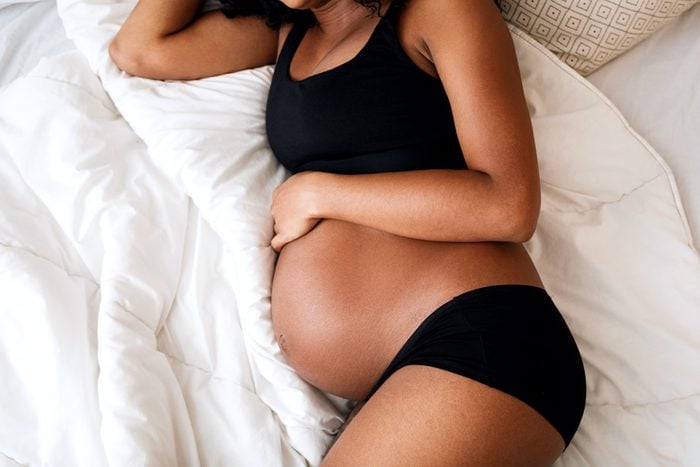
Different panties for different uses
Women’s underwear is available not only in a variety of materials and cuts, but also for a variety of purposes. For example:
Period panties
Period panties are meant to be absorbent and leak-proof so that women can wear them as their sole sanitary product during menstruation, although many women wear them in addition to other sanitary products such as tampons and pads. (You’ll find two Thinx products on our list—another brand we’ve tested and can vouch for.)
Period panties may also be used in the first postpartum weeks, when there’s bleeding but it isn’t recommended to use a tampon yet.
Panties for pregnancy and menopause
Pregnancy itself is a time when women’s underwear needs may change, points out Dr. Wesley. For example, a woman who ordinarily prefers briefs may find them binding on her abdomen during pregnancy and will, therefore, be more comfortable in a bikini cut.
In addition, pregnancy can cause vulvar sensitivity, which means a woman may be more comfortable in a pair of panties with a wider seat. Menopausal women may also experience sensitivity with a thinner seat, albeit as a result of vaginal dryness or thinner pubic hair. Also, women who choose to go without hair may find thinner seats more irritating.
Performance underwear
Dr. Gunter observes that some women prefer to wear performance underwear, which is made from a material that wicks moisture away, when they’re working out. That’s not unhealthy for the vagina for the limited time of the workout, but it’s smart to swap into some clean underwear when your workout is complete.
Now, with the help of these four female gynecologists, we narrowed down the best women’s underwear you can buy on Amazon.
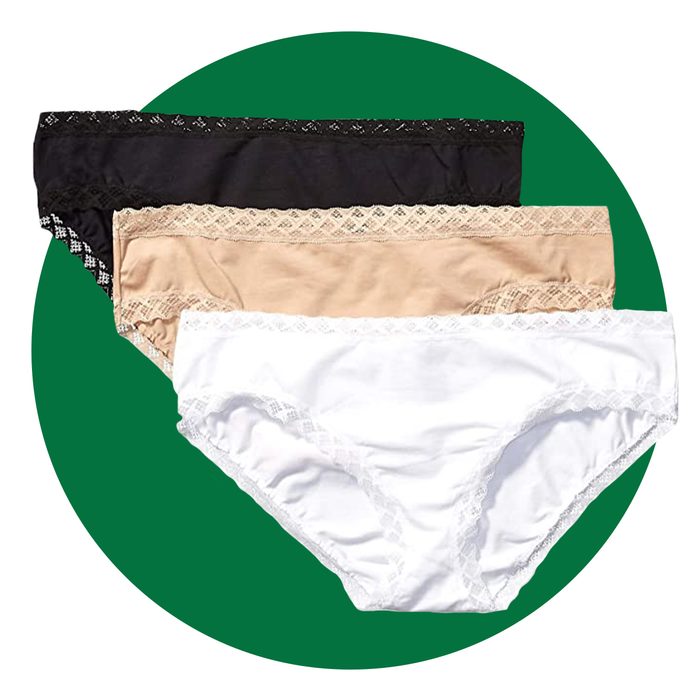
Natori – Bliss Girl Brief
Dr. Langdon recommends the Natori Bliss Girl Brief, which is made of 100 percent cotton with stretchy lace edges. They’re not only breathable, but also ultra-soft.
And while they’re technically a brief, they have a bikini shape, which some women will find flattering.
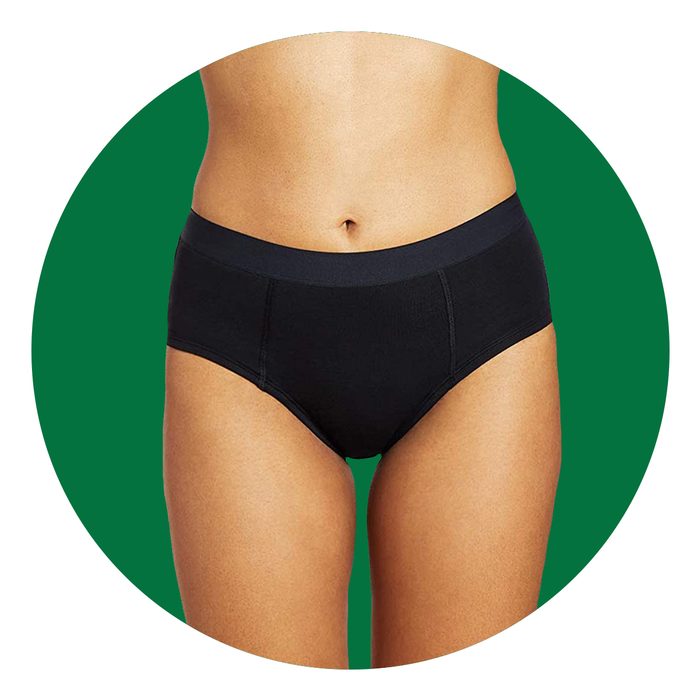
Thinx – Organic Cotton Period Brief
Dr. Wesley loves the Thinx period underwear line because, among other things, you can choose your level of absorbency. It’s also leak-proof and easy to rinse and reuse.
This particular pair is meant for “moderate absorbency,” the company says, which is the equivalent of one and a half tampons.
Yay for sustainability—also check out The Best Menstrual Cups for More Affordable, Sustainable (and Cleaner!) Periods
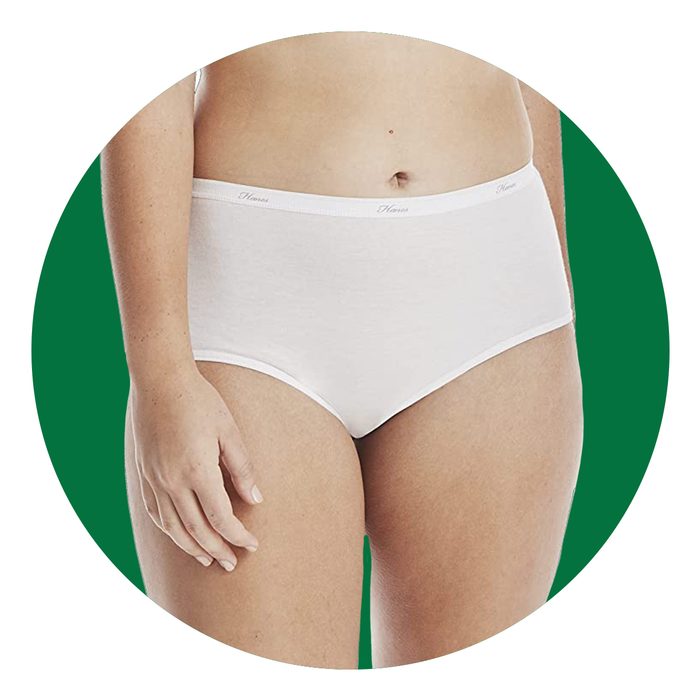
Hanes – High-Waist Cotton Brief
The Hanes classic high-waist briefs are 100 percent cotton (in solid color and prints) and high-waisted for superior comfort. Notably, they’re soft and breathable, which will prevent moisture from being trapped.
This is a highly-rated product (73 percent five-star reviews) with Amazon reviewer mchiara writing, “If you are looking for your standard cotton panty, these are very good. The size is as expected. The quality is good. Good weight in the cotton.”
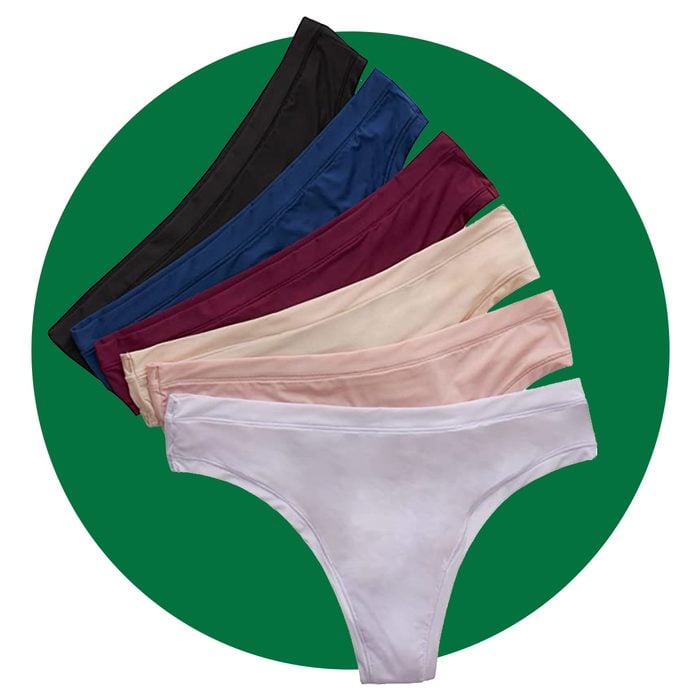
Hanes – ComfortFlex Fit Microfiber Panties
Another strong option from Hanes are the ComfortFlex Fit Microfiber Panties. The lightweight, breathable fabric is designed to keep you cool, and they’re moisture wicking, so you’ll stay dry all day.
A glowing five-star review from Mandy reads, “I can’t even tell you how comfortable these are. It doesn’t feel like I’m wear anything. They are that comfortable. They’re very stretchy and such a soft material.”
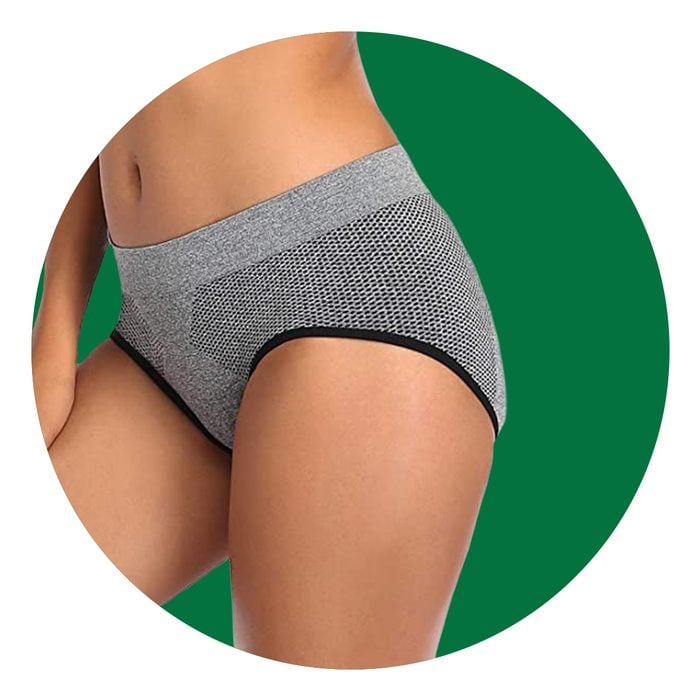
Ocojoce – Breathable Wicking Underwear
If you’re looking for something to wear while you’re active, these panties from Ocojoce could be the perfect fit. They’re made with a breathable mesh design, with what the company calls “odor resistance and moisture wicking performance technology” so you’re comfortable and confident. The tagless back also may keep you from itching at your waist when you’ve got to keep focused on your activity.
Five-star reviewer Rebecca writes, “Fantastic undies! I was looking for some breathable pairs for when I run. These fit great and stay up without rolling down!”
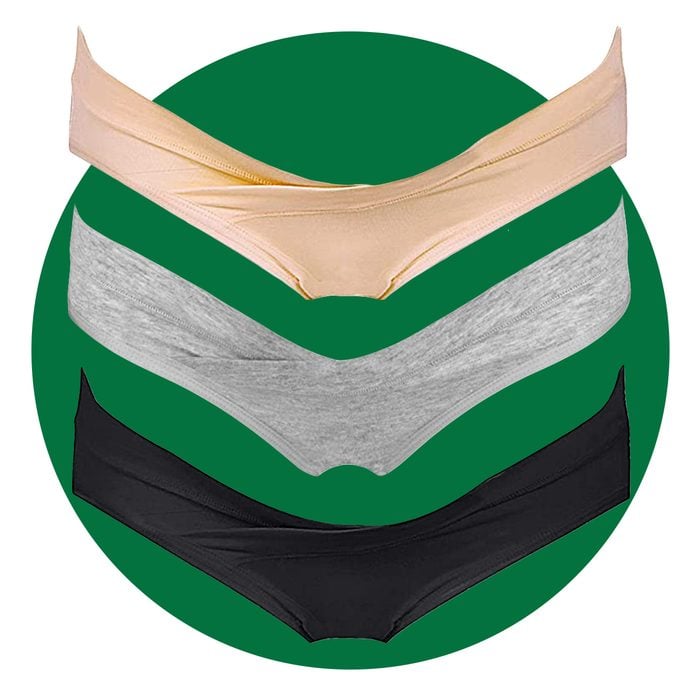
Intimate Portal – Under The Bump Maternity Panty
This breathable, absorbable maternity panty has a 100 percent cotton crotch and is cut super low to fit under your rounded abdominal area without binding or pressure (it also works as a postpartum panty, even for those who deliver by C-section).
Although it’s not made of organic cotton, it is lab-tested to ensure that it is free from harmful chemicals and heavy metals. And because it’s a maternity panty, the lining is intentionally a light color to make it easier for you to detect any unusual spotting.
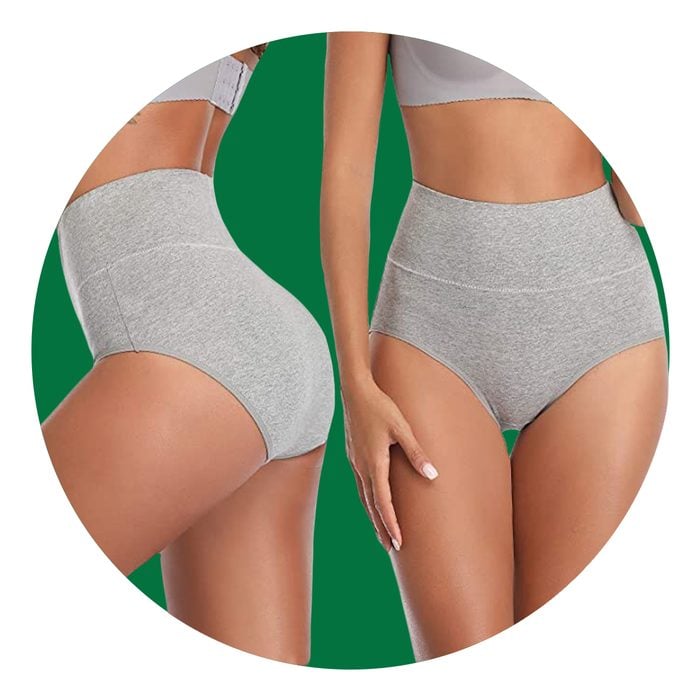
ANNYISON – Soft Cotton High Waist Breathable Solid Color Briefs
The waistband in these ANNYISON panties makes them a great post-partum contender, according to some shoppers who say the waistband gives full support without feeling too tight—and if you’re recovering from a C-section, it’s made to sit above the scar to avoid irritating the incision.
According to one new mom’s five-star review, they may even help you feel like your best self—she wrote: “Bought these for my postpartum recovery, I was a little worried they wouldn’t fit as expected or would not be comfortable. Boy was I wrong! These are the most comfortable underwear, not to mention they really keep everything in all the long big pads that comes with child birth! They also look good for a mom who just gave birth. They give you some confidence!”
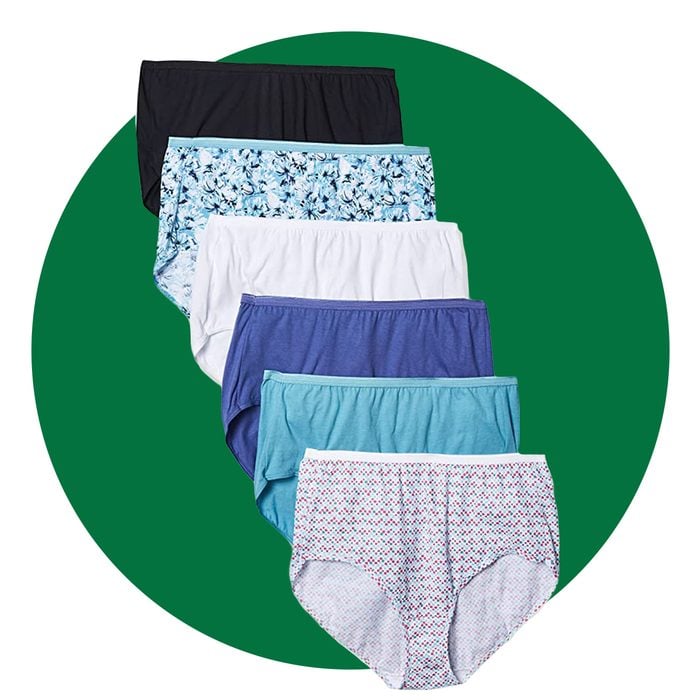
Just My Size – Plus Size Cool Comfort Cotton High Brief
Because sometimes, all you want is comfy ease.
These high-waisted briefs are 100% cotton, so you know they’ll breathe well before you even put them on. The no-pinch waistband and comfortable leg bands also mean you won’t have to deal with digging, chafing, or riding up.
GreenMommy’s five-star review reads, “These are the SOFTEST, most comfy underpants I’ve ever owned. The elastic is extremely soft at the waistband. I just bought two more packages. There was no shrinkage after machine washing and drying. I am VERY happy I found these! I highly recommend them.”
Get The Healthy @Reader’s Digest newsletter for healthy product recs and what’s trending in wellness. Follow us on Facebook and Instagram, and keep reading:
- The 5 Best Hormone-Safe Sunscreens, Recommended by Doctors
- Caffeine Eye Cream: This One “Major” Effect Makes It Totally Worth Trying, an Esthetician Says
- Is a “Sleep Divorce” on the Horizon? First, Try These 4 Anti-Snoring Products
- Is “Fly Yoga” Worth It? Science Says It May Yield 6 Major Health Benefits
Editor’s note: some customer reviews were edited for technical accuracy.

